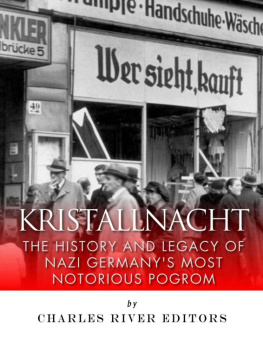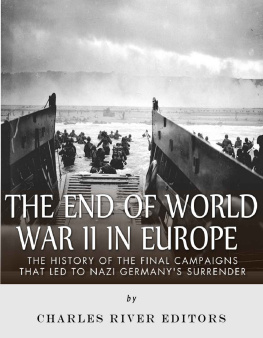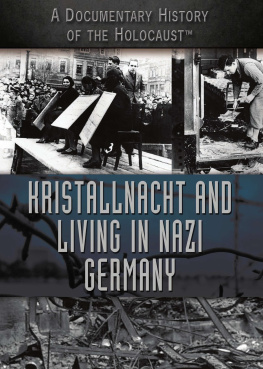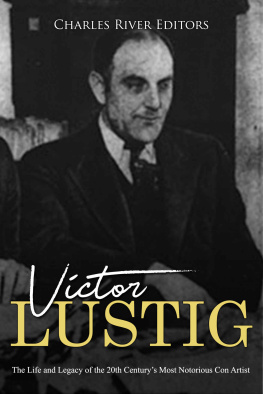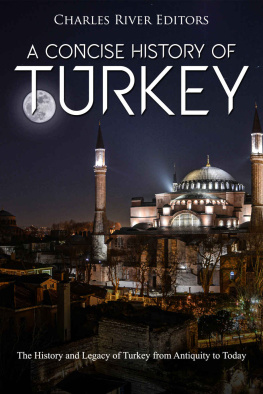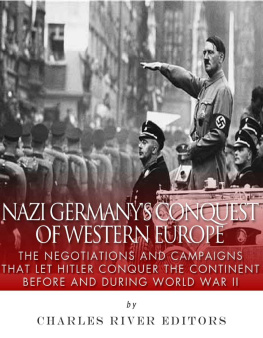Charles River Editors - Kristallnacht: The History and Legacy of Nazi Germanys Most Notorious Pogrom
Here you can read online Charles River Editors - Kristallnacht: The History and Legacy of Nazi Germanys Most Notorious Pogrom full text of the book (entire story) in english for free. Download pdf and epub, get meaning, cover and reviews about this ebook. year: 2014, publisher: Charles River Editors, genre: Home and family. Description of the work, (preface) as well as reviews are available. Best literature library LitArk.com created for fans of good reading and offers a wide selection of genres:
Romance novel
Science fiction
Adventure
Detective
Science
History
Home and family
Prose
Art
Politics
Computer
Non-fiction
Religion
Business
Children
Humor
Choose a favorite category and find really read worthwhile books. Enjoy immersion in the world of imagination, feel the emotions of the characters or learn something new for yourself, make an fascinating discovery.
- Book:Kristallnacht: The History and Legacy of Nazi Germanys Most Notorious Pogrom
- Author:
- Publisher:Charles River Editors
- Genre:
- Year:2014
- Rating:4 / 5
- Favourites:Add to favourites
- Your mark:
Kristallnacht: The History and Legacy of Nazi Germanys Most Notorious Pogrom: summary, description and annotation
We offer to read an annotation, description, summary or preface (depends on what the author of the book "Kristallnacht: The History and Legacy of Nazi Germanys Most Notorious Pogrom" wrote himself). If you haven't found the necessary information about the book — write in the comments, we will try to find it.
Includes pictures
Includes accounts of Kristallnacht written by eyewitnesses
Includes footnotes and a bibliography for further reading
Includes a table of contents
It did not take long before the first heavy grey stones came tumbling down, and the children of the village amused themselves as they flung stones into the many coloured windows. When the first rays of a cold and pale November sun penetrated the heavy dark clouds, the little synagogue was but a heap of stone, broken glass and smashed-up woodwork. Eric Lucas description of the destruction of a synagogue during Kristallnacht
On the 40th anniversary of Kristallnacht, Germanys night of broken glass, then chancellor of Germany Helmut Schmidt spoke of its legacy, The German night, whose observance after the passage of forty years has brought us together today, remains a cause of bitterness and shame. In those places where the houses of God stood in flames, where a signal from those in power set of a train of destruction and robbery, of humiliation, abduction and incarceration- there was an end to peace, to justice, to humanity. The night of 9 November 1938 marked one of the stages along the path leading down to hell.
The hell that Schmidt spoke of was the persecution and attempted elimination of the Jewish people from Europe itself as envisioned by Adolf Hitler and the Nazi leadership he brought to power in Germany during the 1930s. On the night of November 9, 1938, an organized show of force against Jewish businesses and private homes occurred throughout German cities and recently annexed territories in Austria and the Sudetenland. This night would mark a turning point in the lives of not only Jews but all people of the time, marking a clear new path of violence, destruction, and persecution for Jews throughout Europe in the years to follow.
Though German Jews had been discriminated against in many forms for as long as the German nation existed, Kristallnacht is widely viewed as the key point in the chronology of Jewish persecution, and many historians consider it to be the beginning of the Holocaust itself. With the condoned and even coordinated violence of Kristallnacht, a new and unprecedented era of anti-Jewish sentiment and action began.
The name Kristallnacht is in itself controversial. The origin of the term, which translates as the night of crystal or the night of broken glass, is unknown. There has been conjecture that the Nazi propaganda minister, Josef Goebbels himself, coined the term, but there is now considerable concern in Germany over anything that might seem to make light of or minimize the events of the Holocaust, so the name Kristallnacht is not favored. Instead, the November Pogrom or Reich Pogrom is the preferred term amongst German historians. As Walter Pehle, German professor of Nazi history, warns, It is clear that the term Crystal Night serves to foster a vicious minimalizing of its memory, a discounting of grave reality: such cynical appellations function to reinterpret manslaughter and murder arson and robbery, plunder, and massive property damage, transforming these into a glistening event marked by sparkle and gleam. Rabbi Benjamin Blech sees the acceptance of the term as a way to verbally embrace the very heresy that abetted the Holocaust and likens it to murder by euphemism.
In fact, the Nazis themselves referred to the attacks as the Jew Action. Though they would describe the event as a spontaneous response of good Germans who could no longer stand the intrigues of the Jews in their midst, Reichskristallnacht, or the November pogrom, was not only allowed but fueled and encouraged by Nazi leaders in an effort to remove the Jews politically, economically, socially, and even physically from German life and culture.
Kristallnacht: The History and Legacy of Nazi Germanys Most Notorious Pogrom analyzes one of the most controversial events in pre-war Germany.
Charles River Editors: author's other books
Who wrote Kristallnacht: The History and Legacy of Nazi Germanys Most Notorious Pogrom? Find out the surname, the name of the author of the book and a list of all author's works by series.

